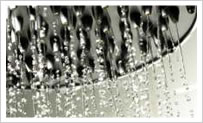

The Compact Brazed Heat Exchanger (CBE) allows media at different temperatures to
come into close proximity, separated only by channel plates that enable heat from one
media to be transferred to the other with very high efficiency. The concept is similar to the
older plate and frame technology, but without the gaskets and frame parts.

Air conditioning

Industrial refrigeration

Desuper heaters

Commercial refrigeration
The refrigeration area includes all types of applications where a refrigerant is used for cooling or heating. Typical examples of refrigerant applications include chillers, refrigerant systems, brine coolers, air dryers, desuper heaters and economizers. Refrigerant applications often
involve high pressure, and the robustness of our CBEs makes them an excellent choice. Our CBEs are also designed to distribute the refrigerant uniformly in the port. This gives optimal utilization of the heat-exchanging
surface, and creates an extremely compact and costeffective solution.
Chiller applications
In a chiller, a refrigerant system is used indirectly to cool residential or commercial areas, industrial fluids, etc., by utilizing the energy-absorbing effect of the evaporator. Applications include comfort chillers
(water-cooled/air cooled), supermarket systems, industrial chillers and
close temperature control chillers.
Dedicated heat pumps
Dedicated heat pumps are common in climates where a low requirement for air conditioning during the summer makes reversible heat pumps less attractive. Heat pumps can be optimized for heating only, which reduces operating costs compared with reversible heat pumps. Our CBEs are very suitable for these systems, with high efficiency in a small space.
Desuper heaters (heat recovery)
Desuper heater units are located between comp-ressors and condensers to recover and utilize the high temperature
energy of the superheated refrigerant gas. SWEP CBEs are ideal for this duty, which makes it possible to heat water to a higher temperature than would be possible in a condenser.
Economizers
An economizer uses part of the total refrigerant flow from the condenser to cool the rest of the refrigerant flow, and can be used to provide extra cooling for the compressor. The high efficiency of our CBE economizers minimizes the required temperature difference between the refrigerant flows, which in turn increases the overall efficiency of th e system.